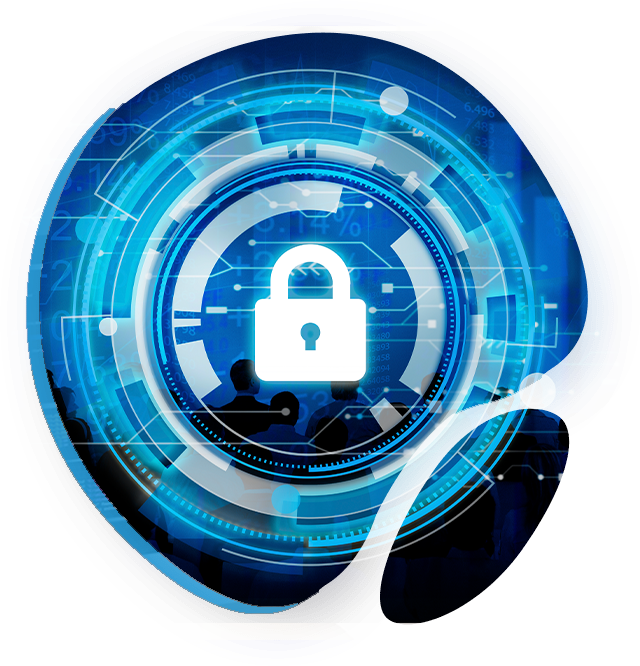
Cybersecurity is becoming increasingly important as technology advances and more of our personal and professional information is stored online. A successful cyber attack can have devastating consequences, such as identity theft, financial loss, and damage to reputation. As a result, individuals and organizations alike are investing in cybersecurity measures to protect themselves and their sensitive data.
Our aim is to protect your digital assets, computer systems, networks, electronic devices, software and database systems from unauthorized access, theft, damage, or other malicious attacks. We help organizations identify, prevent, and respond to security incidents.

Identify, assess, and mitigate the risks associated with potential cyber threats and vulnerabilities. The goal is to protect the organization's critical assets and information, minimize the likelihood and impact of cyber incidents, and ensure continuity of business operations.

Review and recommend processes, policies, and frameworks that the organization adopts to manage and mitigate cyber risks. Establish guidelines and practices to ensure the confidentiality, integrity, and availability of data and systems, including developing a cybersecurity strategy, risk management processes, incident response plans, and implementing security controls.

Recommend measures and safeguards to be put in place to protect systems, data, and information from unauthorized access, misuse, or damage. These controls can be technical, such as firewalls, encryption, antivirus software, and intrusion detection systems, or physical, such as physical access restrictions or biometric authentication, or administrative such as policies, procedures, guidelines, security awareness training, and incident response procedures.

A systematic evaluation and assessment of an organization's information systems, processes, and controls to determine the effectiveness of its cybersecurity measures. We provide an in-depth review of Security Policies and Procedures, Access Controls, Network and Systems Security, Data Protection, Incident Response and Recovery, Physical Security, and Compliance and Risk Management. The audit findings help organizations prioritize remediation efforts, strengthen their security posture, and ensure ongoing compliance with regulations and industry best practices.

Refers to the process of adhering to relevant laws, regulations, standards, and guidelines pertaining to cybersecurity as it relates to your organizations specific business operations. Among others, there is Regulatory Compliance, for example, General Data Protection Regulation (GDPR), the Health Insurance Portability and Accountability Act (HIPAA), or the Payment Card Industry Data Security Standard (PCI DSS), Standards and Frameworks Compliance, for example, the National Institute of Standards and Technology (NIST) Cybersecurity Framework, ISO 27001, or the Center for Internet Security (CIS) Controls, Reporting and Documentation Compliance, Penalties and Consequences Compliance.
A simulated attack on a system, network, or application to identify security weaknesses and vulnerabilities.
Training and education programs to help employees within an organization develop a better understanding of cybersecurity threats and best practices.
We work with organizations to respond to security incidents, such as data breaches or cyber attacks.
Integrating cybersecurity practices and principles into the DevOps (Development and Operations) methodology. DevSecOps aims to embed security throughout the software development life cycle rather than treating it as an afterthought. It involves integrating security practices, tools, and processes into the development and deployment pipelines, enabling organizations to build secure and resilient software systems from the ground up.
© 2023 Agility ICT Solutions Limited